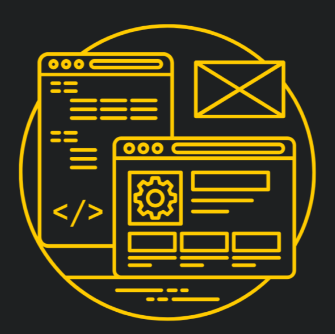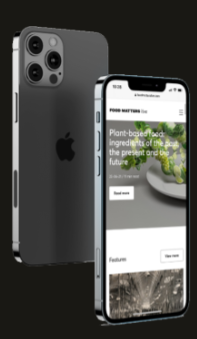The importance of a well-designed website is well-noted in today's digital world. The internet has impacted how people interact, connect, and do business. Websites have developed from simple online brochures to powerful tools determining a company's success or failure.
Businesses, entrepreneurs, and individuals may harness the potential of website design and programming to reach larger audiences, develop brand authority, and create engaging user experiences.
A leading web design and programming agency like Pearl Lemon Web plays a crucial role in the digital landscape of website design and programming. With their expertise and experience, they can offer relevant solutions and services to businesses and individuals seeking to create impactful online experiences.
Understanding The Art Of Website Design And Mastering The Intricacies Of Programming
Website Design: The visual depiction of a brand's or an individual's online identity with its perfect balance of creativity and utility. It is a form of art that draws attention, engages visitors, and effectively communicates a message.
User Experience (UX) And User Interface (UI): UX design creates seamless and intuitive user journeys to easily explore the website and obtain the necessary information or products. On the other hand, UI design is responsible for the website's visual components, ensuring that it is aesthetically pleasing, visually consistent, and matches the brand's identity.
Information Architecture And Wireframing: User-friendly websites are built on the foundation of information architecture and wireframing. These methods entail organising material, structuring website layouts, and developing user-friendly navigation mechanisms.
Website Programming: Programming is the driving force that powers its functionality. Front-end development builds the code that makes ideals come to life on the user's device. HTML (Hypertext Markup Language) offers structure and content, CSS (Cascading Style Sheets) improves visual display, and JavaScript adds interactivity and dynamic elements to websites.
Back-End Development Complements Front-End Development: Front-end development deals with the visual elements of a website, which users see and interact with. Back-end development includes a website's structure, infrastructure, data, and logic.
Content Management Systems (CMS): Content Management Systems (CMS) and website builders have increased usage to ease website construction. CMS platforms such as WordPress, Joomla, and Drupal provide pre-built frameworks that allow users to construct and administer websites without requiring considerable programming experience.
Web Development: Web development has welcomed new possibilities as technology advances. Given the dominance of mobile devices in internet access, responsive design and mobile optimisation have become critical. Accelerated Mobile Pages (AMP) and Progressive Web Apps (PWA) optimise webpages for mobile, delivering fast loading times and engaging user experiences across several devices. It is linked to search engine optimisation (SEO) and web accessibility. Website optimisation for search engines improves visibility and organic traffic. At the same time, following accessibility requirements guarantees that persons with impairments may easily access and browse websites.

In terms of programming, Pearl Lemon Web has a strong grasp of front-end and back-end development. They have expertise in HTML, CSS, JavaScript, and server-side languages like Python, Ruby, and PHP. This allows them to build robust and scalable web applications, integrating databases for efficient data management. Their focus on security ensures that websites are protected, and user data is safeguarded.
Future Of Website Design And Programming
The future of website design and programming is full of intriguing possibilities. Artificial intelligence (AI) and machine learning (ML) can change the industry by automating monotonous operations, personalising content, and allowing complex features such as voice user interfaces and chatbots. Integrating Virtual Reality (VR) with Augmented Reality (AR) will enable immersive web experiences, opening up e-commerce, gaming, and education prospects. Furthermore, blockchain technology improves online security by enabling encrypted transactions and securing user data.
Unleashing Creativity And Functionality
The Power Of Visual Appeal

- Balancing aesthetics and functionality: To provide an engaging user experience, a visually appealing website finds the appropriate balance between design features and functional factors.
- Colour schemes, typefaces, and graphics can create emotions, convey messages, and leave a lasting impression on website visitors when they are carefully chosen.
- Creating a consistent and memorable brand identity: A website may successfully express and reinforce a brand's identity, making it unique and recognised to users through cohesive design components and visual consistency.
Design Of UX and UI
- UX and UI design focuses on providing smooth and intuitive navigation tools that guide users effortlessly across the website, ensuring a positive user experience.
- To optimise for various devices and screen sizes, UX and UI design adaptively optimise websites to give optimal user experiences across multiple devices and screen sizes, improving accessibility and usability.
- Responsive design concepts are used in UX and UI design to guarantee that websites automatically alter and adapt to multiple screen sizes, offering a consistent and user-friendly experience on any device.
Information Architecture And Wireframing
- Information architecture is deliberately organising and structuring website information to make it easily discoverable and accessible, hence improving usability and user pleasure.
- Creating successful wireframes and prototypes enables designers to visualise and iterate on website layouts and functionality, facilitating efficient communication and alignment among stakeholders throughout the design process.
- Smart information architecture can help designers optimise the user journey by streamlining navigation and ensuring that users can simply discover the needed information or complete desired tasks on the website.
The Engine Behind A Seamless Web Experience

Front-End Development
- HTML serves as the backbone of the web, providing the structure and content for websites.
- CSS enhances the aesthetics and layout of web pages, creating visually appealing designs.
- JavaScript adds interactivity and dynamic features to websites, making them engaging and responsive.
Back-End Development
- Back-end development is facilitated by server-side languages such as Python, Ruby, and PHP, which enable robust and efficient web application functionality.
- Database integration and administration enable websites to store and retrieve data effectively, boosting functionality and user experiences.
- Building secure and scalable web applications guarantees that websites can handle increased traffic while protecting user data.
Website Builders And CMS
- Millions of websites are powered by WordPress, Joomla, and Drupal, which provide user-friendly CMS platforms that simplify content generation and maintenance.
- Drag-and-drop website builders make development more accessible by allowing consumers to design and publish websites without requiring considerable coding knowledge.
- Choosing between custom and off-the-shelf solutions assists businesses in determining the best match for their specific demands while balancing flexibility, scalability, and cost-effectiveness.
Enhancing User Experiences And Online Visibility
Responsive Design And Mobile Optimization
The ever-changing world of web technologies influences how we engage with websites and digital material. A. In order to adapt to the mobile-first era, when smartphones and tablets dominate internet consumption, responsive design and mobile optimisation have become critical. Websites must be developed to give consistent user experiences across devices with different screen sizes and resolutions. AMP and PWA technologies improve mobile device performance and accessibility by providing quicker loading times and app-like functionalities.
SEO And Web Accessibility

SEO and online accessibility are critical in making websites discoverable and accessible. SEO entails optimising websites in order to improve their exposure and ranking on search engine results pages, hence increasing organic traffic and online presence. At the same time, online accessibility guarantees that websites are useable and navigable for people with disabilities by following accessibility requirements and providing alternative formats for content consumption. Structured data and metadata are important in SEO because they provide search engines with contextual information about webpages, allowing them to understand the content better and increase exposure in related queries.
Web Analytics And Conversion Rate Optimization (CRO)
Web analytics and conversion rate optimisation (CRO) are critical components of a successful online presence because they enable organisations to make data-driven choices and maximise conversion rates.
Using data-driven insights to gather important information about website performance, user behaviour, and marketing efficacy is a powerful tool for businesses. Web analytics solutions generate metrics and reports revealing important information such as traffic sources, user demographics, popular pages, and user interaction. Businesses may uncover patterns, identify strengths and weaknesses, and make informed decisions to optimise their websites by evaluating these data points.
Web Analytics
Web Analytics relies heavily on tracking user behaviour and engagement. Businesses acquire insights into how consumers engage with their websites through monitoring technologies such as cookies, event tracking, and user journey analysis. Metrics such as page views, bounce rates, click-through rates, time spent on a page, and conversion The Funnels Guys are all part of this. Businesses can discover areas for improvement, optimise user flow, and improve the overall user experience by understanding user behaviour.
CRO Methods
CRO methods are essential for increasing conversion rates and optimising desired activities on a website, such as making a purchase, submitting a form, or signing up for a subscription. CRO entails assessing user data, doing A/B testing, and adopting optimisation approaches to boost conversion rates. This could involve upgrading call-to-action buttons, increasing website load times, streamlining checkout processes, or improving trust signals. Businesses may improve conversion rates, generate revenue growth, and boost overall business performance by constantly refining and optimising essential components of their websites.

Pearl Lemon Web stays updated with the latest trends and technologies in website design and programming. They are knowledgeable about the importance of web analytics and conversion rate optimisation (CRO) in maximising the performance and effectiveness of websites. By harnessing the power of data-driven insights, they can track user behaviour, identify areas for improvement, and implement strategies to enhance conversion rates and user engagement.
Takeaway
Website design and programming offer vast opportunities for businesses and individuals to create impactful online experiences. A well-designed website is crucial for communication, interaction, and business success. It combines aesthetics and functionality to evoke emotions, convey messages, and establish brand identity. User Experience (UX) and User Interface (UI) design ensure intuitive navigation and responsive layouts across devices. Information architecture and wireframing enhance usability by organising content and streamlining navigation.
Website programming powers functionality using front-end (HTML, CSS, JavaScript) and back-end (Python, Ruby, PHP) development. Content Management Systems (CMS) simplify content creation, while future advancements like AI, VR, and blockchain promise automated tasks, immersive experiences, and enhanced security. Balancing creativity, visual appeal, and technology unleashes remarkable online experiences and drives success in the digital world.
